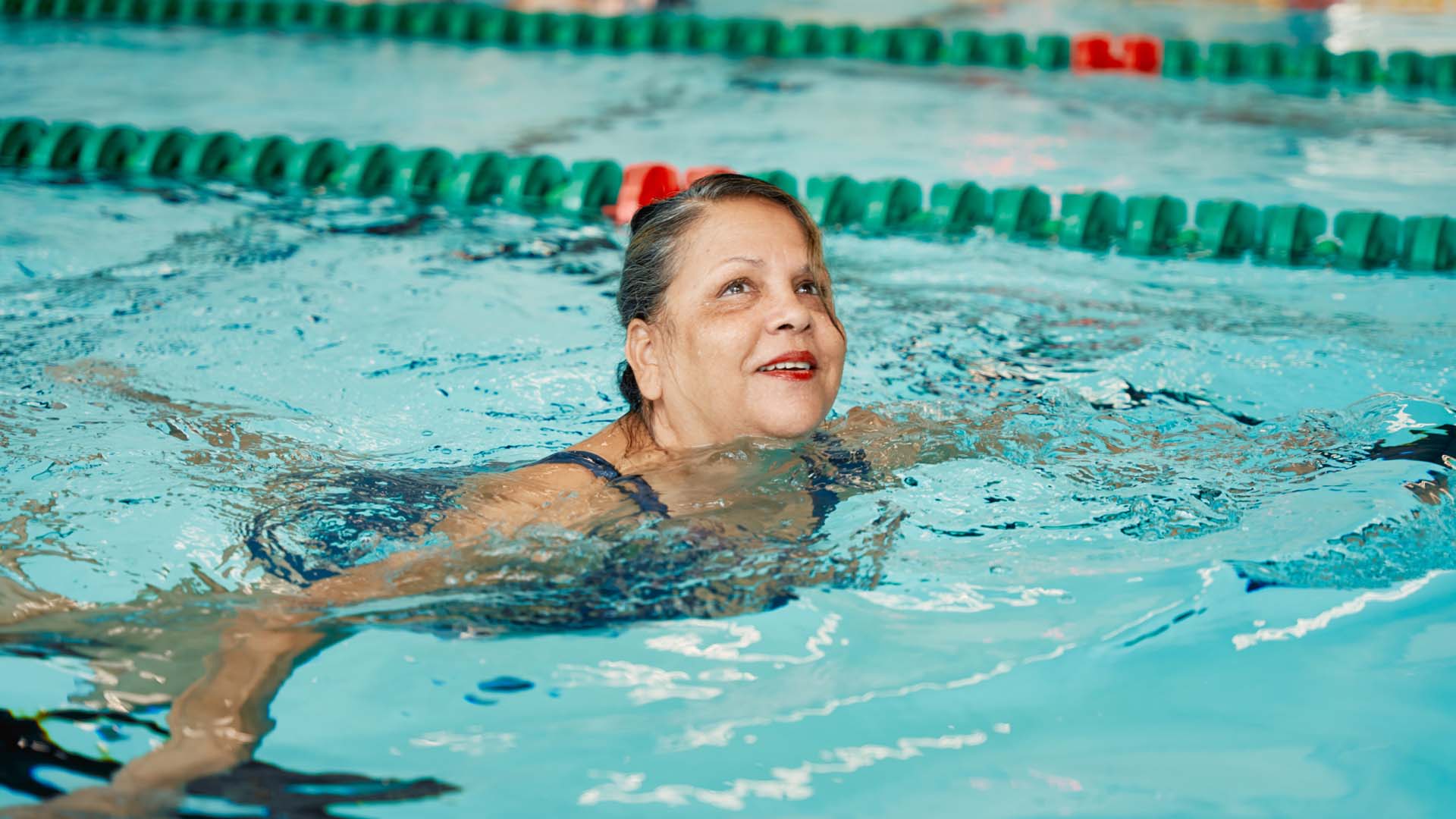
There are so many benefits of swimming, from reducing your risk of chronic illness, to being an excellent stress-reliever and even extending your life expectancy.
But is swimming good for weight loss, too?
A recent campaign from Swim England called on more doctors to prescribe swimming as medicine, in part because – whether you choose to swim backstroke, breaststroke, butterfly or freestyle (front crawl) – the four main strokes all help you to burn calories.
Research has also found swimming regularly can be an effective way to keep in shape and lose weight.
To find out more, we’ve spoken with two swim coaches about swimming for weight loss.
Yes, swimming regularly can indeed help you lose weight. Several research studies have found swimming regularly can help to lower body fat.
A 2021 study involving 40 men and women over the age of 50 who had either type 2 diabetes or hypertension found regular swimming helped to lower their blood glucose, cholesterol, blood pressure, body fat percent, and their body mass index (BMI) score.
The researchers concluded regular swimming is useful for weight loss. In addition, a 2010 study published in the journal Metabolism focused on the effects of regular swimming over a longer period on a group of sedentary older women.
It found swimming improved body fat distribution, lowered waist and hip circumferences within six months, and that regular swimming led to weight loss.
Social enterprise Better Leisure is the UK’s largest operator of swimming pools, and it runs a number of GP-referral programmes along with local partners.
These aim to encourage people to swim regularly to help manage health issues such as being overweight.

One of these programmes is Swim 2 Slim, a 12-week weight-management initiative that’s ran in partnership with Achieve Oxfordshire, which provides diet advice.
Better Leisure covers the physical activity component of the programme, and this comprises ten 45-minute group swimming sessions.
Over the course of the 12-week programme, participants do lose weight.
“The aim of the Swim 2 Slim pool sessions is to improve each participant’s swim technique to increase their endurance,” explains Heidi Portlock, a swim coach at Better Leisure, who also leads the Healthwise scheme for the West Oxfordshire area.
“This results in improved cardiovascular fitness, muscle mass and weight loss of 3-5% of their weight by the end of the programme.”
Swimming is under-appreciated as a form of physical activity that can help with weight management and losing weight, according to one swim coach.
“Swimming is an excellent exercise for weight loss,” says Carl Cawood, a swim coach and product development manager at health-club chain Total Fitness.
“It provides a full-body workout and engages multiple muscle groups simultaneously, and this leads to increased calorie expenditure."
He adds: "Swimming elevates the metabolic rate, and this allows for continued calorie burning even after you’ve finished your swim session.
"The variety of strokes and the enjoyable nature of swimming also make it a sustainable and motivating exercise for weight loss.”

Cawood adds that the buoyancy of the water helps to provide natural resistance, and this is what helps to build and improve muscle definition.
“Swimming requires continuous and controlled movements, and this helps to promote muscle endurance and strength,” he says.
“Additionally, the low-impact nature of swimming puts minimal stress on the joints, and this enables consistent training that helps to achieve toned muscles across the body.”
He stresses that although swimming is a useful tool for weight loss, it goes hand in hand with making healthy eating choices and following a balanced diet.
Portlock says swimming regularly is an enjoyable way to lose weight, so this can help to keep people motivated. Here are her top tips for creating a regular swimming habit to help with your weight loss goals:
“Take it steady at first and take short rests when needed,” she advises. “Good technique is better than speed to start with.”
For example, if you’re aiming to focus on your breathing timing, don’t get sidetracked thinking about your kick technique at the same time.
Three times a week is a great target to aim for, according to our experts.
Most pools have slow, medium and fast lane options as well as an open swim area.
“You’ll be much more likely to attend when you’ve pre-planned when you’re going to swim,” Portlock adds.
Becca is a freelance journalist and author. In 2021 her first book, Screen Time, was published, which is a guide to help people find a better balance with the technology they use every day. For more than 12 years she’s been writing about the worlds of science and technology. She’s covered topics like which wearable smartwatch is best, how to get started with virtual reality and what the future of robots in our homes might look like one day. Her work has appeared in the Guardian, Metro, Inverse, New Scientist, TechRadar, Wired and many more.
View author page

Facial weakness, a sudden headache and dizziness can all be signs of a stroke, we've got the facts from an expert.

Knee pain is more common as we age: to help we've got the best advice from 3 leading experts with easy ways to make a difference.

Do you know the symptoms of a heart attack? Here’s what to look out for, and how to prevent one.

Front, back or side? Which sleeping position is best for you as you get older, and which ones you should avoid


